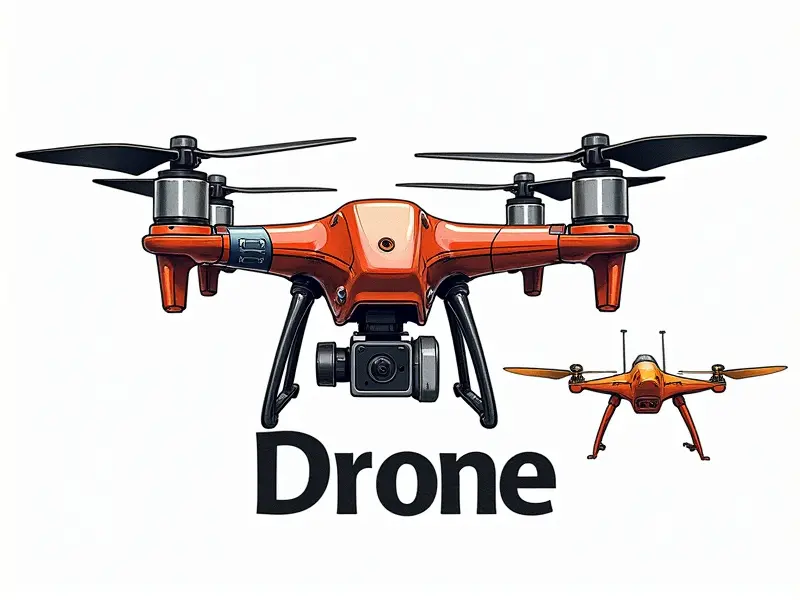Fixing a quadcopter

Troubleshooting Common Quadcopter Issues
Quadcopters, or drones, are sophisticated machines that require regular maintenance and troubleshooting to ensure optimal performance. Whether you're a hobbyist or a professional pilot, understanding how to address common issues is crucial. Some of the most frequent problems include connectivity issues, motor malfunctions, frame damage, and battery troubles.
Identifying Common Problems
- Motor Issues: Unbalanced performance, overheating, or inconsistent speed can indicate motor problems.
- Battery Problems: Rapid discharge, poor flight time, and swollen batteries are common signs of battery issues.
- Frame Damage: Cracks, bends, or missing components in the frame can affect stability and safety.
Fixing Antenna and FPV Connectivity
Fully functioning antennas and first-person view (FPV) systems are essential for clear video transmission during flights. Poor connectivity often results from damaged cables, loose connections, or interference from other devices.
Steps to Troubleshoot FPV Issues
- Check Connections: Ensure all antenna and FPV components are securely connected.
- Inspect Cables: Look for any damage or wear on the cables, especially at bends and joints.
- Reduce Interference: Move away from sources of interference like Wi-Fi routers and other electronic devices.
Repairing Damaged Frame Components
Damaged frames can compromise flight stability and safety. Common frame issues include cracks, bends, or missing parts due to crashes or rough handling.
Frame Repair Techniques
- Plastic Frames: Use super glue or epoxy resin to repair small cracks and reinforce weak areas.
- Metal Frames: Welding is often necessary for metal repairs, but minor dents can be hammered out.
Balancing ESCs for Smooth Performance
Electronic Speed Controllers (ESCs) control the motor speed in quadcopters. Imbalanced ESCs can lead to erratic flight behavior and reduced performance. Here’s how to balance them:
ESC Balancing Process
- Disconnect Batteries: Ensure all batteries are disconnected before starting.
- Use a Balance Charger: Connect the ESCs to a balance charger and follow manufacturer instructions.
- Battery Testing: Test each battery individually for voltage consistency across cells.
Calibrating Gyroscopes for Stability
Gyroscopes provide critical stabilization data during flight. Proper calibration ensures accurate readings, which is crucial for maintaining stability and control.
Steps to Calibrate Gyros
- Ground Calibration: Place the quadcopter on a stable surface before takeoff.
- Follow Manufacturer Instructions: Use specific calibration procedures provided by your drone’s manufacturer.
- Periodic Re-calibration: Calibrate gyros periodically, especially after crashes or significant use.
Replacing Motors in Your Quadcopter
Motors are critical components that can wear out over time due to dust, debris, and mechanical stress. Replacing faulty motors is essential for maintaining performance:
Motor Replacement Guide
- Disassemble Drone: Carefully remove the old motor and disconnect all wiring.
- Select Compatible Motors: Ensure new motors are compatible with your quadcopter model.
- Re-assemble and Test: Reinstall the motor, reconnect wires, and test for proper functionality.
Aligning Arms on Your Quadcopter
Proper arm alignment is crucial for maintaining balance and ensuring efficient flight dynamics. Misaligned arms can cause vibrations and poor performance.
Arm Alignment Process
- Check Arm Positions: Ensure all arms are positioned symmetrically around the center of the drone.
- Adjust Arm Screws: Loosen screws, reposition arms, and tighten to secure them in place.
- Balanced Weight Distribution: Check that each arm has an equal weight distribution for optimal balance.
Battery Problems in Quadcopters Solved
Batteries are a critical component of any quadcopter, providing the power needed for sustained flight. Common battery issues include rapid discharge and swelling, which can be addressed through proper maintenance:
Solving Battery Issues
- Monitor Voltage Levels: Regularly check voltage levels to ensure batteries are not over-discharged.
- Store Batteries Properly: Keep batteries in a cool, dry place away from direct sunlight and heat sources.
- Replace Swollen Batteries: Dispose of swollen or leaking batteries safely and replace them immediately.
Fixing Connectivity Issues with FPV
First-person view (FPV) connectivity problems can significantly impact your flying experience. Common issues include signal dropouts, interference, and poor video quality:
Tips for Fixing FPV Connectivity
- Signal Boosters: Use signal boosters to extend range and improve video clarity.
- Cable Quality: Ensure all cables are high-quality and free from damage.
- Avoid Interference: Move away from sources of interference like Wi-Fi networks and other electronic devices.
Servo Replacement Guide for Drones
Servos control the movement of various components in quadcopters, such as landing gear or camera gimbals. Replacing faulty servos is essential to maintain functionality:
Steps to Replace Servos
- Identify Faulty Component: Determine which servo is causing issues.
- Select Compatible Replacement: Choose a servo that matches the specifications of your quadcopter.
- Install and Test: Carefully install the new servo, reconnect wires, and test for proper operation.
Upgrading Firmware to Resolve Issues
Firmware updates can resolve a variety of issues, from performance improvements to bug fixes. Regularly updating your quadcopter’s firmware is crucial:
Steps to Upgrade Firmware
- Check for Updates: Visit the manufacturer's website or use their software to check for available updates.
- Download and Install: Follow the instructions provided by your drone’s firmware update system.
- Test After Update: Ensure all functions work correctly after upgrading the firmware.
Conclusion
Maintaining your quadcopter through regular checks, repairs, and upgrades is essential for optimal performance. By addressing issues promptly and following best practices, you can ensure that your drone remains a reliable tool or hobbyist device.

